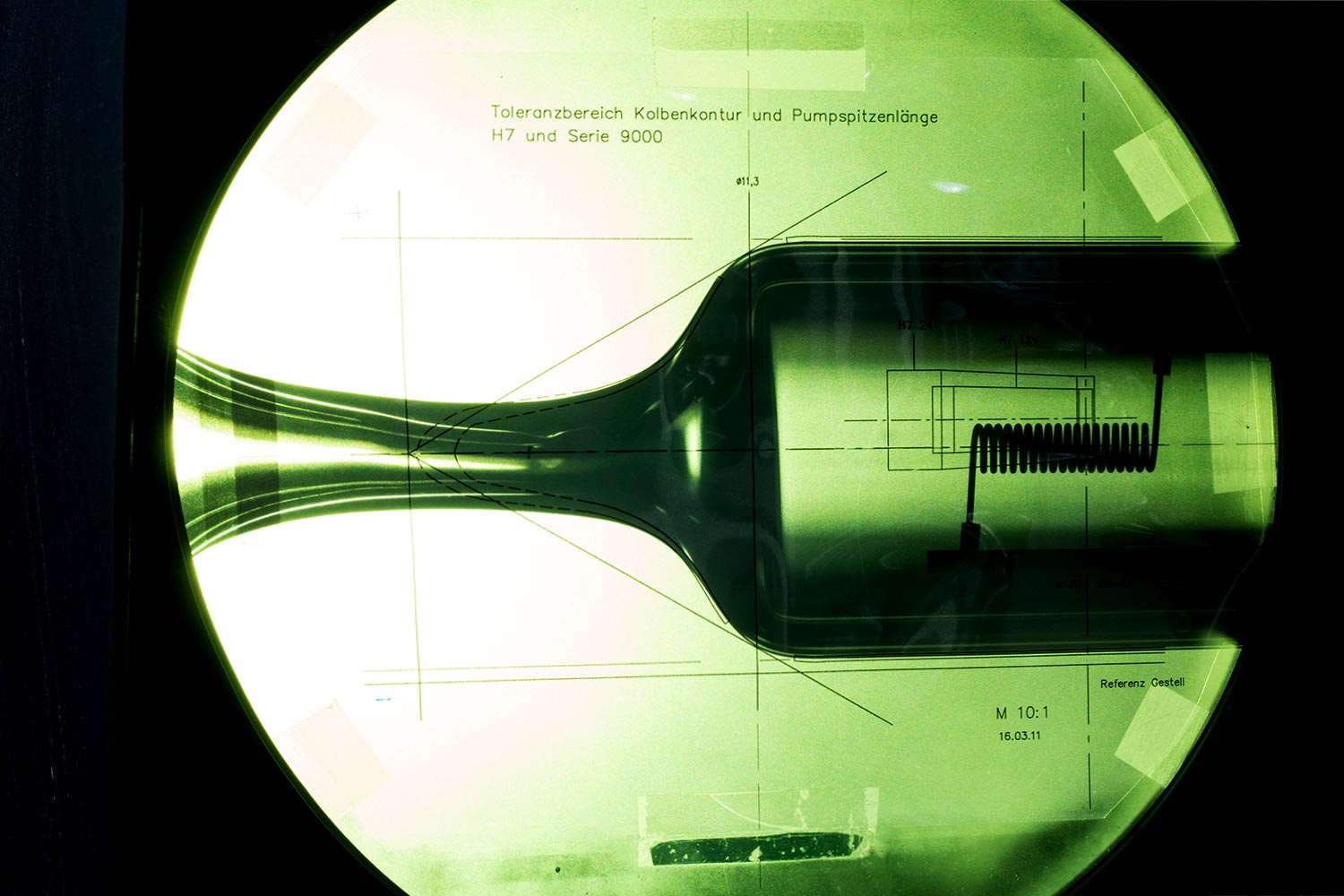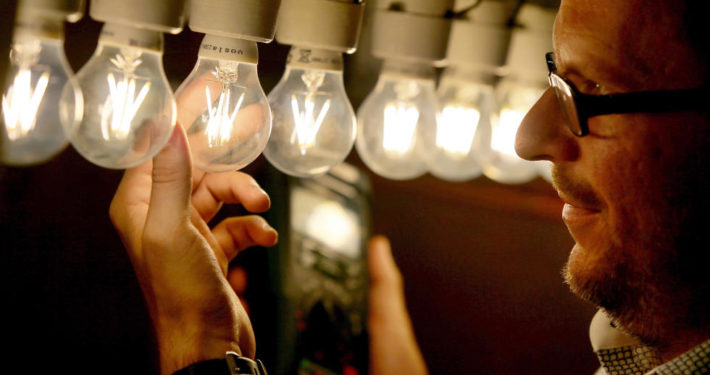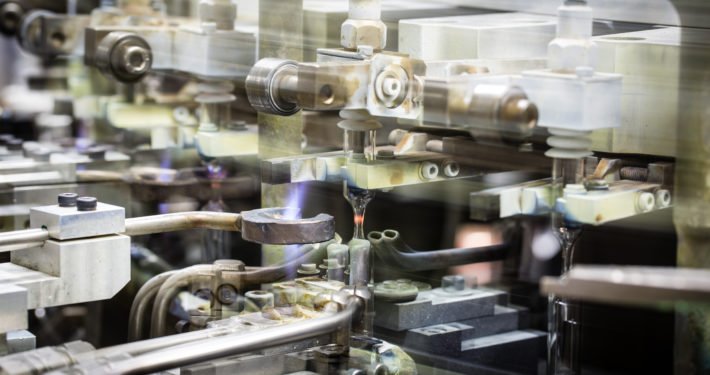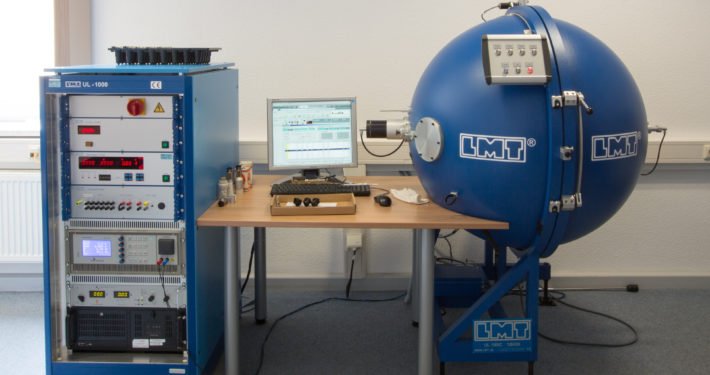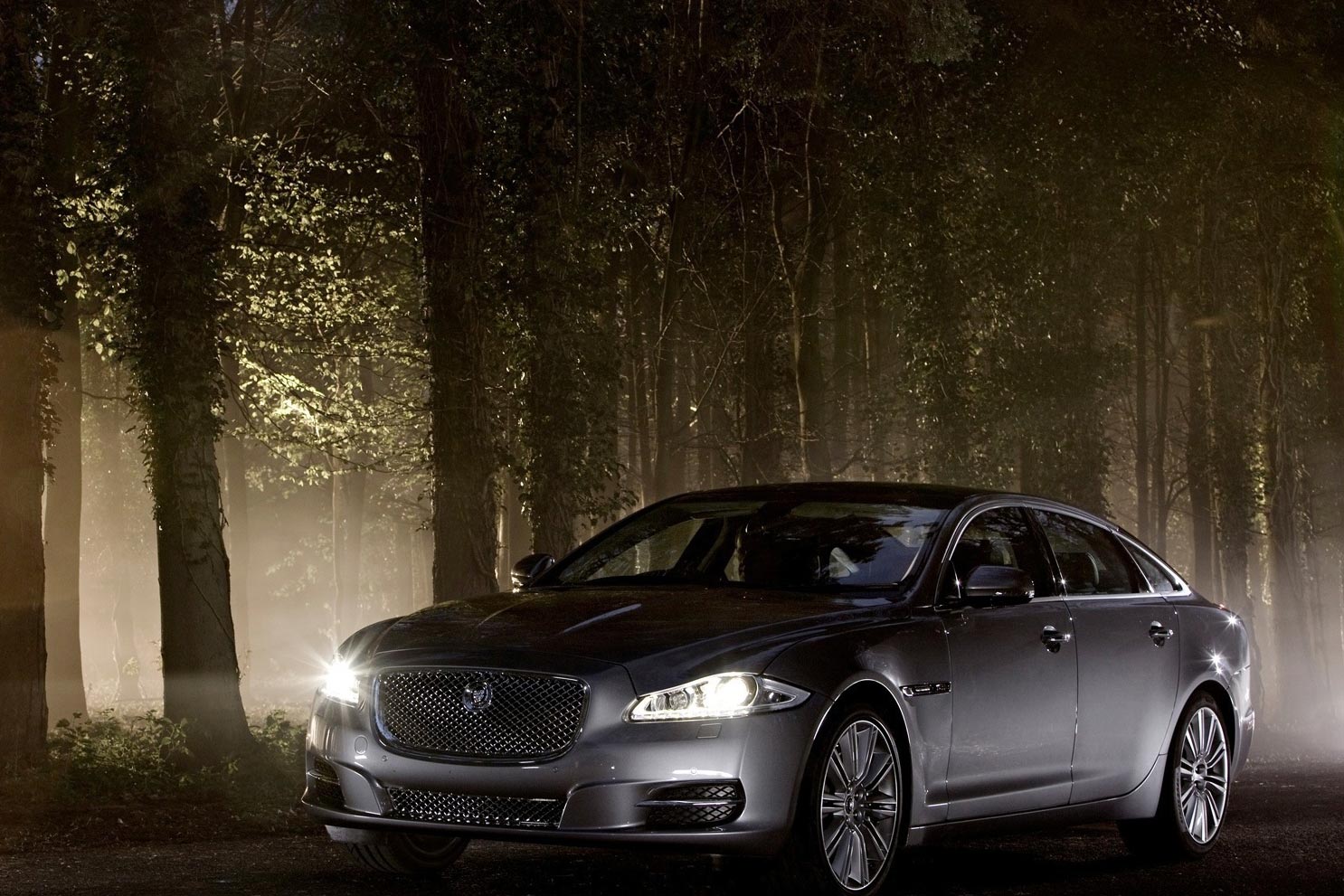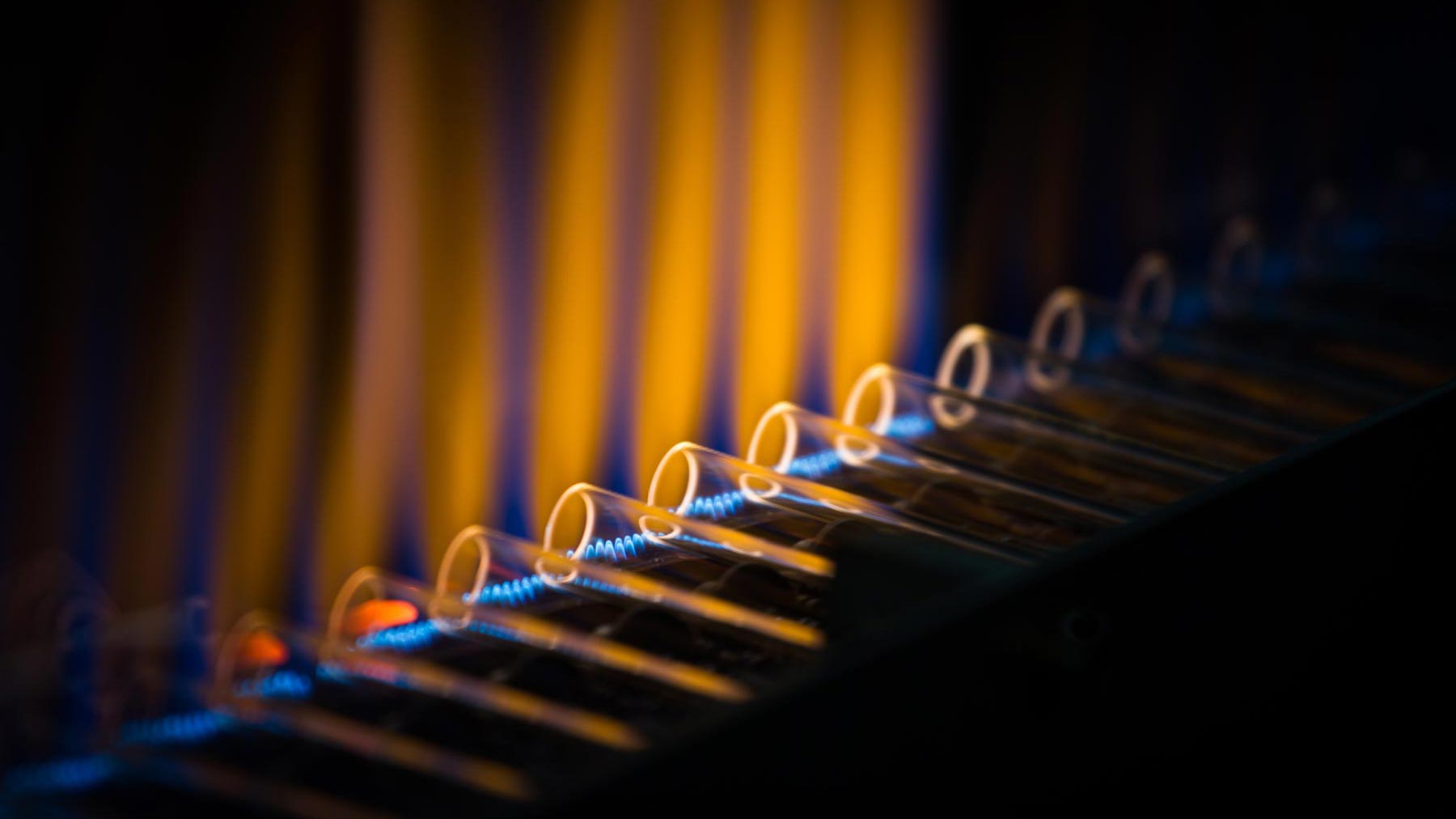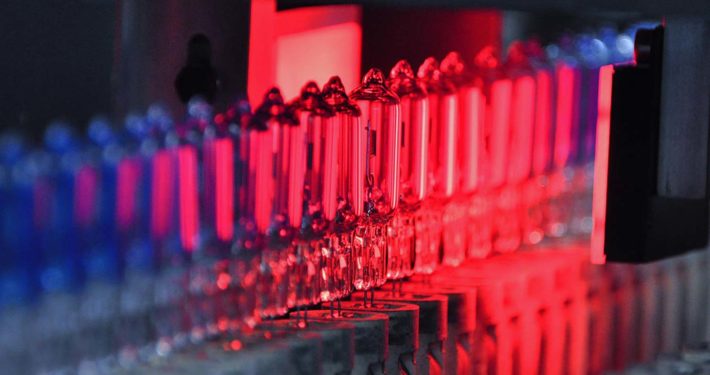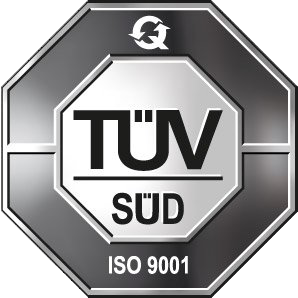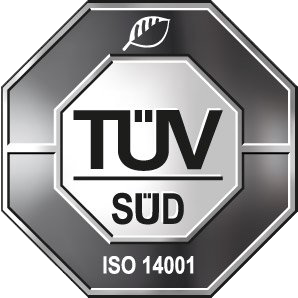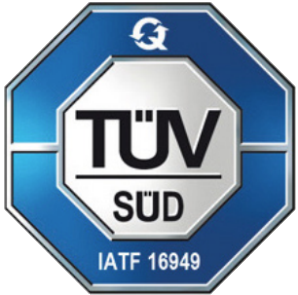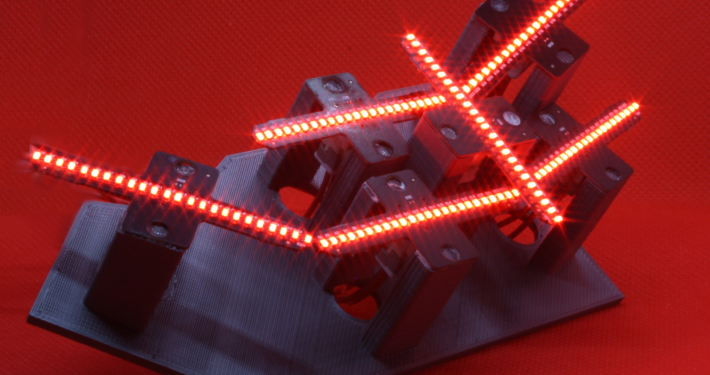 https://www.vosla.com/wp-content/uploads/IMG_5157-bearb-scaled.jpg 1862 2560 Olaf Klein https://www.vosla.com/wp-content/uploads/2018/04/Logo-Vosla-2.svg Olaf Klein2021-02-04 11:54:262021-02-08 08:39:45New vosla LED product
https://www.vosla.com/wp-content/uploads/IMG_5157-bearb-scaled.jpg 1862 2560 Olaf Klein https://www.vosla.com/wp-content/uploads/2018/04/Logo-Vosla-2.svg Olaf Klein2021-02-04 11:54:262021-02-08 08:39:45New vosla LED productThere is a clear dividing line between good and bad at vosla. And that is extremely narrow. She knows no “about”. She knows only “fit” and “unfit”, light or shadow. Insights into the Precision Codex from vosla.
Anyone who enters the production halls of vosla in Plauen, thinks himself in the midst of a gigantic clockwork. With the precision of a Swiss mechanic, circular apparatuses rotate here, interlocking processes like gears. However, the time here seems to be a little faster – instead of the usual 3,600 seconds per hour, the hour here is measured in 4,000 units.
“When it comes to automotive lighting, we create a high, 5-digit output per day with our 4.000 series. All manufactured with the same precision.”
Jörg Hochmuth is one of the heads of the production department. He has a very close watch that this movement does not produce the tiniest mistake. Because unlike a Swiss clockwork is here even more demanding in terms of accuracy. Because after each tick – to stay in the picture – is checked, if it has ticked right.
More precisely, it is measured with hair-splitting accuracy, whether the result of the last production step meets the probably unique quality requirements here in Plauen. Where again the picture hangs wrong. For hair splitting would be a far too crude yardstick.
A hundredth of a millimeter decides on good and bad
Hochmuth explains: “It starts when the luminaires enter the frame. There is a one hundred percent check for weld strength testing. Then the geometry test up to a hundredth of a millimeter with hundred percent good-bad control. But even in the first step only geometrically flawless semi-finished product reaches the next processing step. ”
Monitors with microscope images hang everywhere
No samples are measured here. With the tremendous speed dictated by the 4,000-meter cycle, a sophisticated and custom-developed system measures every single component that runs off the production line – in real time. From the filament to the frame to the glass body, not a single element remains unrivaled. More than 20 of these measuring points will be at the end. Before, no lamp leaves the factory.
vosla is a supplier to the automotive industry. Only in the aircraft industry are the quality requirements even stricter. And at vosla itself. Hochmuth is by no means overburdened with these requirements. His team surpasses the claims confidently – namely ten times.
“The industry sets tight tolerances. Such tolerance is, let’s say, plus-minus two tenths. Let’s assume that during production the tolerance has been exceeded or undershot by one hundredth. Then you have 0.21 now. As the plant says: The product falls out. No customer would see the difference, even you, not even with any tools. That can only be this automatic geometry check. That’s why we say: one-hundredth of a millimeter decides on good and bad. Within such tolerances we move. ”
QR codes are the individual signature of each lamp
But this is not the end of the uncompromising pursuit of precision in the production of lamps. vosla signs each individual lamp in the HB3 / 4 / HIR2 product group in the automotive sector with a QR code. He makes each lamp traceable – except for the second of the production exactly. This includes details of the geometric data or torch production that were measured at that time. All the data gained further help to perfect processes even further.
Jörg Hochmuth is convinced that the QR code signature also offers tremendous benefits for vosla’s industrial customers. That’s why his team is working to integrate this feature and the data even more into the process chain.
Certifications for all these things are also available elsewhere. Also vosla can be certified every year its quality and product standards according to international standards. But norms and standards are one thing – they far surpass the other. Here you keep it more with the latter.
